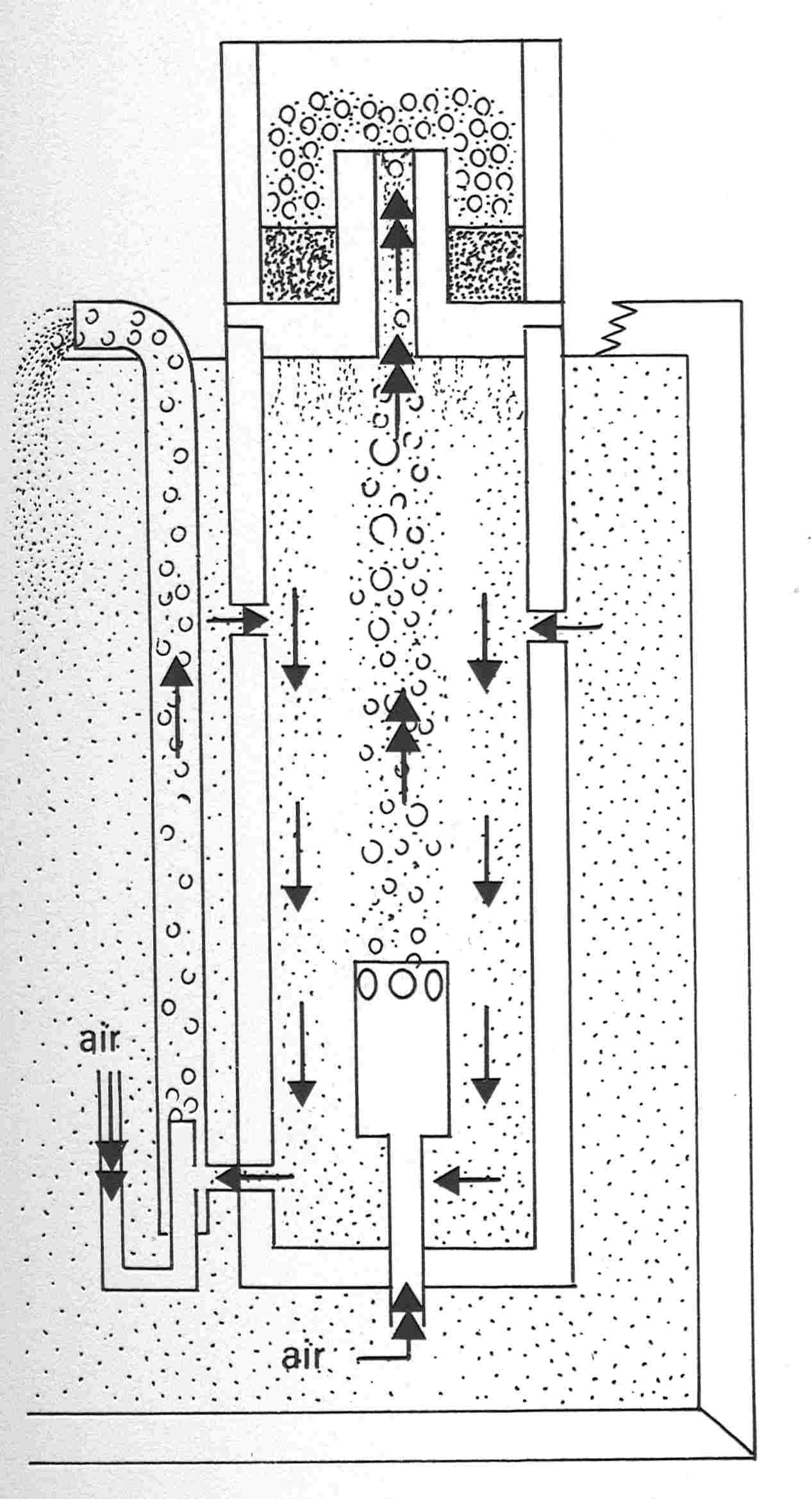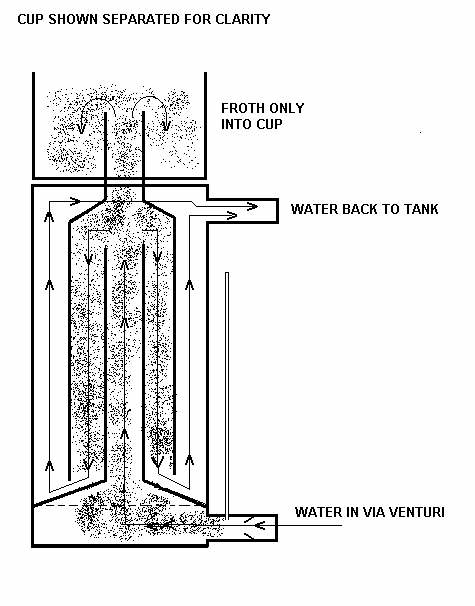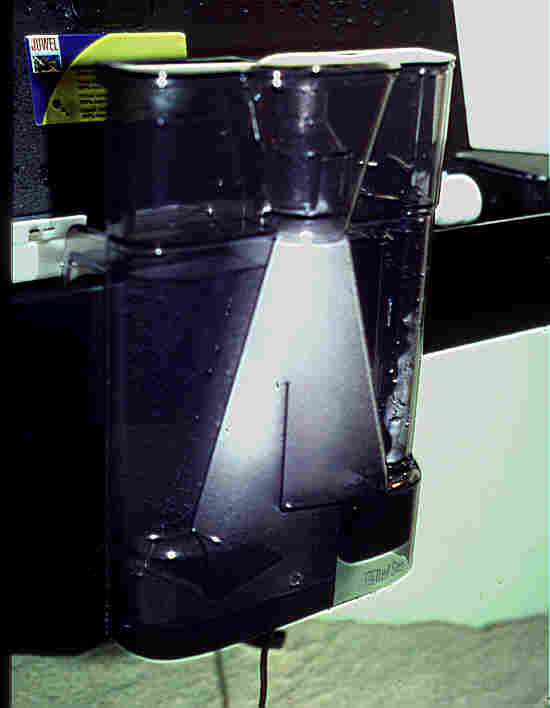
Note that in this internal protein skimmer the water current is downward - against the rising column of bubbles to increase 'contact time' for better skimming.
The provision of correct water conditions at all times is the main secret of success in marine fishkeeping.
We make no apologies for repeatedly stressing this point.
As soon as living animals are present, the water begins to deteriorate through pollution of their waste products.
The basic constituent of this waste is ammonia which soon forms, by bacterial action, nitrite. Both these compounds are toxic and should either be minimised or removed. Existing aquarists will already be familiar with mechanical, chemical and biological filtration methods and all of these can be employed with marines - with some extra help too.
Protein skimming removes organic material from the water by producing a froth which is collected in a container on the skimmer and disposed of at a convenient time. Protein skimmers can be situated inside or outside the tank, and be air- or power-operated. Modern skimmers employ a needle-wheel impeller to break up introduced air to make an even efficient skimming action.

Note that in this internal protein skimmer the water current is downward - against the rising column of bubbles to increase 'contact time' for better skimming.

Water from the tank can be supplied to an external protein skimmer by a pump; forcing the water through a venturi sucks in air and creates a fine mist of very tiny bubbles. This gives a huge surface area too which the organic material can stick and thus be carried up into the container.
Ozone may be used in conjunction with protein skimmers to sterilise the water even further.

This modern skimmer is narrow enough to hang on the back of the tank without creating space problems. The through-flowing water has a deliberately convoluted path through the dense bubbles in the centre section.
The result of skimming is to remove much 'raw material' which would otherwise form ammonia-based compounds. Rather than have a bulky biological filter, mainists use 'Living Rock' to filter the water more completely.
Bacteria on its surface turn ammonia first into nitrite and then nitrate; bacteria on the internal surfaces of the prous rock then utilise the oxygen in the nitrate when feeding thus leaving nitrogen and completing the 'nitrogen cycle.'
Phosphate-removing materials can be used in any associated power filters to minimise growth of algae.
In addition to these measures, regular partial water changes also help to keep levels of nitrate down to a safe minimum.
What Size Aquarium?
Water Preparation
Lighting
Setting-up and Running-In
Fish & Invertebrates
Water Condition Management
Useful Hints
Last updated December 1, 2003